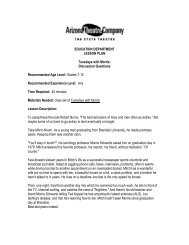CHARACTERS SYNOPSIS - Arizona Theatre Company
CHARACTERS SYNOPSIS - Arizona Theatre Company
CHARACTERS SYNOPSIS - Arizona Theatre Company
You also want an ePaper? Increase the reach of your titles
YUMPU automatically turns print PDFs into web optimized ePapers that Google loves.
THE MARRIAGE OF FIGARO (Le Nozze di Figaro)<br />
Play Guide<br />
<strong>CHARACTERS</strong><br />
FIGARO – A barber who is a servant to the Count and<br />
engaged to Susanna. He owes Marcellina money and must<br />
marry her if he does not pay up.<br />
SUSANNA – The Countess’ witty and beautiful maid<br />
who hopes to marry Figaro.<br />
COUNT ALMAVIVA – Employer of Figaro and<br />
Susanna, a ladies’ man, who has feelings for Susanna.<br />
COUNTESS ALMAVIVA – The Count’s wife. Still in<br />
love with him, despite his philandering.<br />
CHERUBINO – The Count’s young, flirtatious page,<br />
who is in love with Barbarina and The Countess.<br />
DR. BARTOLO – The former guardian of the Countess, who<br />
holds a grudge against Figaro.<br />
Jason Hardy plays Figaro<br />
MARCELLINA – Bartolo’s housekeeper. Figaro owes her money.<br />
DON BASILIO – The music master who constantly intervenes and spreads gossip.<br />
BARBARINA – The cute, teenage daughter of Antonio who is in love with Cherubino.<br />
ANTONIO – The Count’s gardener, who is Barbarina’s father and Susanna’s uncle.<br />
<strong>SYNOPSIS</strong><br />
ACT I<br />
It is Figaro and Susanna’s wedding day. Inside the bedroom which the Count has given Figaro<br />
and Susanna as their wedding gifts, Figaro measures the dimensions for their bed while Susanna<br />
tries on a new hat. Susanna dislikes the room, claiming that it is much too close to the rooms of<br />
the Count. She reveals to Figaro that the Count has tried to seduce her. The Countess rings for<br />
Susanna and she departs. Figaro resolves that he will thwart his master’s plans.
Bartolo and Marcellina enter and plot to make good on<br />
Figaro’s word to marry Marcellina if he cannot pay a<br />
debt he owes her. Susanna and Marcellina exchange<br />
insults as Susanna hurries her out. Cherubino enters and<br />
explains to Susanna that he is in love with every other<br />
woman in the palace. The Count enters and Cherubino<br />
hides. The Count, thinking he and Susanna are alone,<br />
begins making advances to her until he is interrupted by the arrival of<br />
Don Basilio. The Count hides and Basilio gossips about the happenings in the castle. Basilio tells<br />
Susanna he thinks that Cherubino has feelings for the Countess, and upon hearing this news, the<br />
Count emerges from hiding. After a tense exchange, Cherubino is discovered. Figaro rushes into<br />
the room, carrying Susanna’s wedding veil and accompanied by villages who sing the Count’s<br />
praises. Figaro thanks the Count for renouncing the wedding night custom, and asks the Count to<br />
give Susanna the veil as a symbol of purity. The Count says he would prefer to postpone the<br />
ceremony until he can celebrate the occasion appropriately. The villages leave, and Figaro and<br />
Susanna try to persuade the Count to allow Cherubino to stay, but to no avail.<br />
Sari Gruber plays Susanna<br />
ACT II<br />
The Countess mourns her husband’s waning affections<br />
towards her. Susanna and Figaro tell the Countess that<br />
the Count is trying to seduce Susanna, and the three of<br />
them devise a plan. The Count will be given a note that<br />
says that the Countess is having an affair. While the<br />
Count is investigating, Figaro and Susanna will be<br />
married quickly. At the same time, Cherubino will be<br />
dressed as Susanna and take her place in a rendezvous<br />
with the Count in order to catch him in the act and force<br />
him to repent. Cherubino sings a love song to the<br />
Countess, and then Susanna dresses him and leaves. The<br />
Count enters, demanding an explanation for an<br />
anonymous letter. The Countess hides Cherubino in her closet Susan Nicely plays Marcellina<br />
and Susanna enters quietly while the Count and the Countess argue over what has been going on<br />
in the bedroom. The Countess says that Susanna is trying on her dress in the closet. The Count<br />
brings the Countess out with him to get tools to break down the door, locking the bedroom<br />
behind him. Susanna switches places with Cherubino, who escapes through the window. When<br />
the Countess and Count re-enter, the Countess admits that Cherubino is in the closet and the<br />
Count threatens to kill Cherubino. When Susanna emerges from hiding, the other two are
puzzled. The Count pleads forgiveness. Figaro enters and asks for an immediate wedding. The<br />
Count interrogates him about the anonymous letter. Antonio enters, complaining about his<br />
flowers, damaged by whoever jumped through the window. Susanna and the Countess try to<br />
convince the Count that Antonio is drunk again, but it is Figaro who assumes the blame, saying it<br />
was he who jumped from the window. Antonio presents a letter dropped by whoever jumped<br />
through the window. The Count believes he has caught Figaro in a lie, but Figaro correctly<br />
guesses that the letter is Cherubino’s army commission. Marcellina, Basilio, and Bartolo enter,<br />
demanding that Figaro honor his word and marry Marcellina or repay his debt. The Count<br />
postpones wedding arrangements until he has fully investigated the matter.<br />
ACT III<br />
The Count is reflecting on the current situation when Susanna enters. She says she is prepared to<br />
meet him later that evening in the garden, if he gives her the promised dowry. Susanna can pay<br />
off Marcellina with the dowry and be free to marry Figaro. Susanna leaves and meets Figaro, and<br />
assures him they will win their case. The Count overhears and becomes infuriated that his<br />
servants enjoy a happiness that he does not. He plots revenge against Figaro.<br />
Figaro, Marcellina, and Bartolo join the Count and his notary, Don Curzio, for the judgment:<br />
Figaro must marry Marcellina or repay his debt. Figaro says he cannot marry without the consent<br />
of his parents, from whom he was stolen as an infant. Marcellina realizes that Figaro is her long<br />
lost son by Bartolo. The Count and Don Curzio are upset by the happy reunion. Susanna enters<br />
with the money to pay Figaro’s debt, but upon seeing<br />
Figaro embracing Marcellina, she becomes upset.<br />
Marcellina and Figaro explain their reunion, and celebrate<br />
the rediscovery of a long-lost son while the Count and<br />
Don Curzio curse the events of the trial.<br />
Marion Pop plays Count Almaviva<br />
Meanwhile, the Countess is still mourning the loss of her<br />
husband’s affections. Susanna enters, and after she<br />
informs her of the verdict of Figaro’s case, they compose<br />
a letter to the Count to meet her in the pine grove. They<br />
seal the letter with a pin.<br />
Barbarina and Cherubino in disguise arrive with flowers for<br />
the Countess. The Count enters with Antonio, who reveals that Cherubino was the one who<br />
jumped out of the balcony window and on to the flower bed. Barbarina pleads with the Count not<br />
to punish Cherubino and let her marry him. The Count agrees.
Figaro enters and the wedding celebrations begin. During the wedding dance, Marcellina,<br />
Bartolo, Susanna, and Figaro are presented to the Count and Countess. Susanna secretly passes<br />
the letter to the Count. Figaro notices the pin and believe it is another indication of the Count’s<br />
affairs.<br />
ACT IV<br />
Figaro and Marcellina arrive in the garden that evening. They see Barbarina, who is searching<br />
for the pin that the Count asked her to return to Susanna. Figaro believes Susanna is unfaithful<br />
and Marcellina leaves to warn Susanna of Figaro’s discovery. He tells Basilio and Bartolo to<br />
help him surprise the loves when he gives the signal. Figaro considers the betraying nature of<br />
women.<br />
Susanna and The Countess enter. The two women have switched clothing. Susanna, disguised as<br />
the Countess, calls for her lover to come, knowingly upsetting Figaro. Mayhem ensues.<br />
Cherubino tries to kiss the Countess (dressed as Susanna). The Count and Figaro shoo him away.<br />
The Count woos his wife dressed as Susanna. Figaro tells Susanna, whom he believes is the<br />
Countess, what is going on. He recognizes Susanna’s voice and still continues to woo the<br />
“Countess”. After Susanna chides him for his trick, the two are reconciled. The Count calls in<br />
witnesses as he comes upon Figaro who he believes is his wife. The entire garden party appears.<br />
The Countess reveals herself and the Count requests forgiveness as he realizes he has been<br />
caught trying to woo Susanna. The Countess lovingly pardons him. Everybody celebrates love<br />
and what a crazy day it has been!<br />
MOZART BIOGRAPHY<br />
Wolfgang Amadeus Mozart was born in Salzburg,<br />
Austria on January 27, 1756. His father, Leopold Mozart,<br />
was the vice Kapellmeister (assistant choir director) to the<br />
Archbishop of Salzburg and one of Europe’s leading<br />
violinists. He had one older sister, named Maria Anna<br />
“Nannerl” Mozart. Leopold tutored Maria Anna on the<br />
violin and the clavier (a precursor to the harpsichord).<br />
Mozart, three years old at the time, would spend hours<br />
picking out tunes on Nannerl’s clavier. By age four,
Leopold began tutoring Mozart was well. Mozart wrote his first compositions when he was five<br />
years old. Though the pieces were relatively simple, they still displayed a strong grasp of music<br />
compositional form and structure. He also had his first public performance with his sister at age<br />
five, before a court in Munich. Mozart’s virtuosity as a performer was so astounding that his<br />
father quit his job, devoted all his time to teaching Mozart, and toured with him all over Europe.<br />
Mozart played for Louis XV in Versailles and George III in London, and he met many famous<br />
musicians during his travels. When Mozart was eight years old, he wrote his first three<br />
symphonies. The next year, his sonatas were being published in Paris. During these travels,<br />
Mozart met Johann Christian Bach, son of Johann Sebastian Bach. The friendship would last<br />
them the rest of their lives.<br />
The life of young Mozart was one of travel, composing, and performing. His father was a<br />
loving but exacting taskmaster. His family’s travels exposed him to diverse operatic genres,<br />
particularly Italian opera and the opera comique in Paris. By age 11, he had written his first<br />
opera, Apollo et Hyacinthus (Apollo and Hyacinth), and at age 14 his opera Mitridate was<br />
performed in Milan. Mozart possessed the unique ability to<br />
vary the moods of his music within the conventional forms of<br />
the period.<br />
When Mozart was sixteen years old, he was appointed<br />
concertmaster in the orchestra of Archbishop of Salzburg. This<br />
meant he now received a salary. He worked for the Archbishop<br />
while also composing music for many private patrons, which<br />
was an important source of income for musicians and<br />
composers at the time. In 1774, Mozart was invited to<br />
compose an opera buffa (comic opera) for the Munich opera<br />
season. During this time, operas were written specifically for<br />
singers who were to perform them. This means the composer had to work closely with the<br />
performers and understand the ability of each singer.<br />
Mozart developed from composing conventional music to writing works of much greater<br />
individuality. He longed to compose operas, but there was a limited demand for them. His low<br />
salary in the concertmaster position persuaded him to want to tour once more. In 1777, Mozart<br />
received permission from the Archbishop of Salzburg to be released from his appointment to go<br />
on tour. Mozart toured with his mother, hoping to find a more lucrative court position. After<br />
staying in Mannheim for several months, the two traveled to Paris. Mozart was not<br />
professionally successful in Paris, and to make matters more difficult, his mother died in Paris<br />
during their tour. Mozart returned to Salzburg in 1779 and was appointed as court organist and<br />
concertmaster to the Archbishop of Salzburg. Just two years later, he resigned from his position<br />
due to increasing tension and disagreements between Mozart and the Archbishop. Mozart moved<br />
to Vienna in 1781. He decided to make his living as a freelance performer and composer. This<br />
was a highly unusual step for a musician to take at the time. His opera Die Entfuhrung aus dem
Serail (The Abduction from the Seraglio) premiered in Vienna in July 1782 and was met with<br />
great success.<br />
Mozart married Constanze Weber in 1782. Mozart’s father and sister were opposed to his<br />
marriage to Constanze because she was part of a lower social class. As a result, they never<br />
developed a good relationship with Constanze. Mozart supported his family by performing in<br />
public and private, teaching, and composing (mainly piano concertos). This was a period of<br />
financial success, and the Mozarts spent lavishly. Mozart and Constanze had six children over<br />
their nine years of marriage. Only two children survived beyond childhood: Karl Thomas, born<br />
in 1784, and Franz Xaver Wolfgang, born four months before his father’s death.<br />
The citizens of Vienna did not hold the same regard for Mozart as an adult as was shown<br />
to him as a child. The adult Mozart was one of several successful musicians and composers, and<br />
he no longer had the special status of child prodigy. Mozart’s mature musical style was not what<br />
the citizens of Vienna were used to. Mozart never received the court appointment he wanted, but<br />
he continued to be a prolific composer and explored new approaches in his works. He<br />
collaborated with librettist Lorenzo da Ponte and composed three great operas: Le Nozze di<br />
Figaro (1786), Don Giovanni (1787), and Cosi fan tutte (1790). In these operas, Mozart ignored<br />
the regular opera standard and created truly innovative work. He created full ranges of emotions<br />
with the music, using major and minor keys to give the impression of opposite reactions and<br />
feelings. Mozart experimented and tested combinations outside of popular standards of the<br />
period.<br />
By 1787, Mozart’s success was truly slipping. His compositions were not being accepted<br />
by Viennese society; they considered his music too difficult and unusual. The emperor himself<br />
told Mozart there were “too many notes” in his compositions. People did not appreciate his<br />
radical music because they did not understand Mozart’s complex and extraordinary music.<br />
Mozart was incorporating many musical elements and styles from different countries into his<br />
works.<br />
Mozart’s behavior was becoming more erratic, and his financial debt was increasing.<br />
Teaching was no longer a large source of income for him. Fewer and fewer patrons were<br />
commissioning work from him. Ironically, the works he was composing at this time are now<br />
considered to be his greatest. He died on December 5, 1791, just prior to his thirty-sixth birthday.<br />
Mozart’s personality has been described as frivolous, eccentric, restless, and mercurial.<br />
While he might have not been the most pleasant person to be around, one cannot deny the<br />
creative genius of Mozart. In less than 36 years, he revolutionized Western music.
LIBRETTIST<br />
Lorenzo Da Ponte wrote the libretto of The Marriage of Figaro, meaning he wrote the<br />
words to Mozart’s music. Da Ponte was born on March 10, 1749 in the Jewish ghetto of Ceneda,<br />
Italy. Da Ponte studied at seminary to become a priest. This is<br />
where he was first introduced to Italian poets, starting his lifelong<br />
love of this genre. Though ordained as a priest at age 24, the<br />
priest lifestyle did not fit Da Ponte, as he was infamous for<br />
gambling and affairs with married women. Da Ponte moved from<br />
Venice to Vienna, the true cultural center at that time. The<br />
Emperor of Vienna was known for his tolerance of Jewish people,<br />
something the rest of Europe did not share, and so Da Ponte felt<br />
satisfied knowing that his origins would not be held against him.<br />
In 1783, Da Ponte was appointed theatre-poet to the Court Opera<br />
in Vienna, which was then devoted to the production of Italian comic opera. It was there that he<br />
met Mozart, and the three collaborated on Le Nozze di Figaro, Cosi fan tutte, and Don Giovanni.<br />
In 1792, Da Ponte moved to London to work with an Italian opera company. It was there<br />
he met Nancy Grahl, whom he dated the rest of his life. In 1805, he and Nancy departed for the<br />
United States, where Da Ponte became a merchant, a bookseller, and a professor of Italian at<br />
Columbia University. Much of his time in the United States was devoted to promoting Italian<br />
opera.<br />
OPERA DEFINITIONS<br />
Aria – An aria is a solo where one character expresses his or her emotional state for several<br />
minutes. While the words to an aria are important, they are sparse and the singer usually repeats<br />
words multiple times.<br />
Aside – A comment from an actor to the audience that the other characters cannot hear.<br />
Bel Canto – “beautiful singing” in Italian. In opera, it is an Italian style of singing emphasizing tone,<br />
phrasing, coloratura passages, and technique.<br />
Cabaletta – Second, faster part of a two-part aria.<br />
Cadenza – a passage of singing, often at the end of an aria, that shows off the singer’s vocal abilities.<br />
Cavatina – The opening, slow section of a two-part aria.<br />
Coloratura – elaborate ornamentation of music written for a singer using many fast notes and trills
Ensemble – Ensemble feature lots of characters singing at once. Mozart uses the ensemble to<br />
express the emotions of several characters simultaneously. He would show his characters’ moods<br />
and alliances through the different music of each group of characters.<br />
Leimotif - short, repeated musical phrases associated with a particular person, place, or idea<br />
Libretto – the complete text of the opera<br />
Overture – An orchestral introduction to the opera.<br />
Pastoral – A pastoral is a drama about the natural world and people who live close to nature.<br />
Recitative – A recitative is as close as opera gets to spoken dialogue; it’s the only time the music<br />
is not as important as the words. Recitatives are accompanied by harpsichord, which makes it<br />
easier to understand the text. The words go by very quickly, and often on just a few notes.<br />
Scena – A dramatic episode within the opera which consists of a variety of numbers—could include a<br />
recitative, a cavatina, and a cabaletta—with a common theme.<br />
Sitzprobe – “Seated rehearsal” in German. The first rehearsal of the singers with the orchestra and no<br />
acting.<br />
Tessitura – The area of vocal range within which the major part is sung.<br />
Trill – a deliberate, very quick alternation between two notes. Not the same as a vibrato, which is more<br />
naturally occurring.<br />
Tremolo – The quick, continuous reiteration of a pitch.<br />
Verismo – a realistic style of opera that started in Italy at the end of the 19 th century.<br />
Vibrato – A natural wavering of frequency (pitch) while singing a note. Not as deliberate as a trill.<br />
SOURCES:<br />
http://www.its.caltech.edu/~tan/Mozartreq/main.html<br />
http://www.chicagooperatheater.org/wolfgang-amadeus-mozart-biography/<br />
http://www.wamozartfan.com/bio.html
http://www.bbc.co.uk/music/artists/b972f589-fb0e-474e-b64a-803b0364fa75<br />
http://www.meetthemusicians.us/wolfgang-amadeus-mozart.asp<br />
http://www.lehrerweb.at/materials/gs/faecheruebergreifendes/vbs/mozart.pdf<br />
http://www.guardian.co.uk/music/2012/aug/14/glyndebourne-2012-the-marriage-of-figaromusical-guide<br />
http://www.manitobaopera.mb.ca/learn/documents/MarriageofFigaroStudyGuidefinal.pdf<br />
http://www.kcopera.org/our_season/docs/guide_figaro.pdf<br />
http://www.madisonopera.org/uploads/PDFs/FIGARO_MatineeGuide_MO.pdf<br />
http://www.metoperafamily.org/metopera/history/stories/synopsis.aspx?customid=13


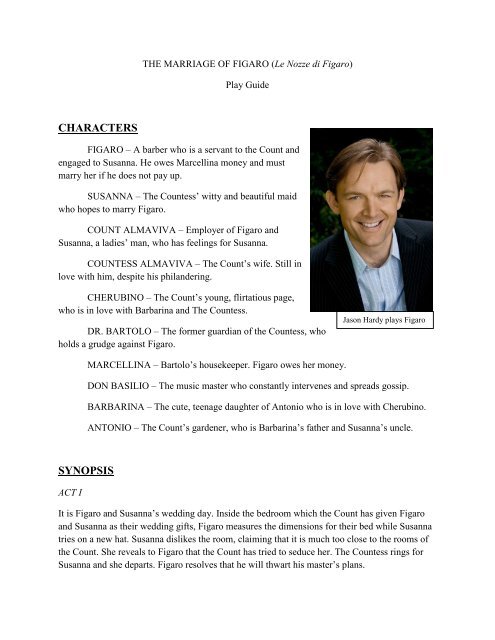
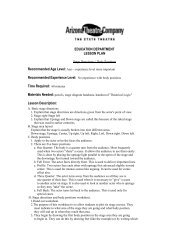



![Play Guide [356k PDF] - Arizona Theatre Company](https://img.yumpu.com/46218320/1/190x245/play-guide-356k-pdf-arizona-theatre-company.jpg?quality=85)
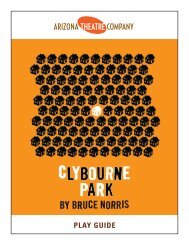
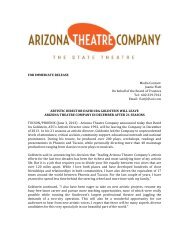
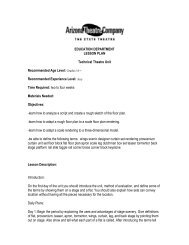
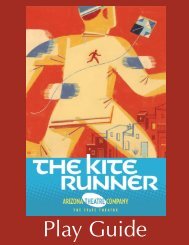
![[title of show] Arizona Theatre Company Play Guide 1](https://img.yumpu.com/24482689/1/190x245/title-of-show-arizona-theatre-company-play-guide-1.jpg?quality=85)
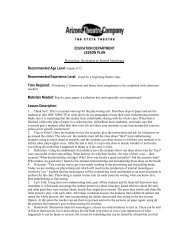
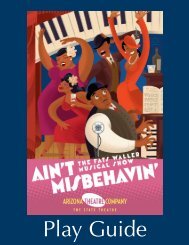
![Play Guide [1.2MB PDF] - Arizona Theatre Company](https://img.yumpu.com/11952176/1/190x245/play-guide-12mb-pdf-arizona-theatre-company.jpg?quality=85)
